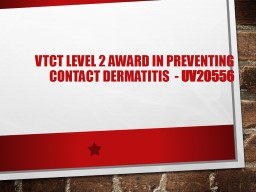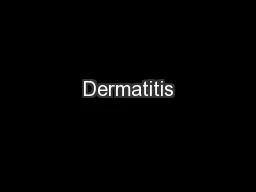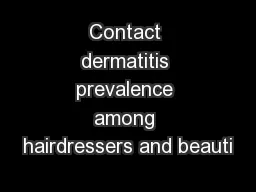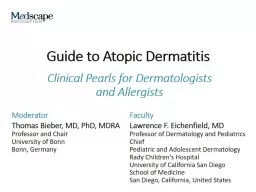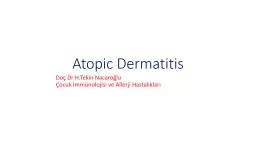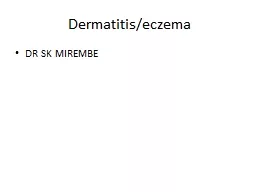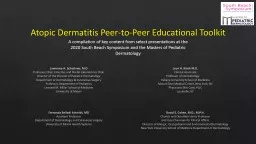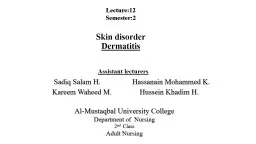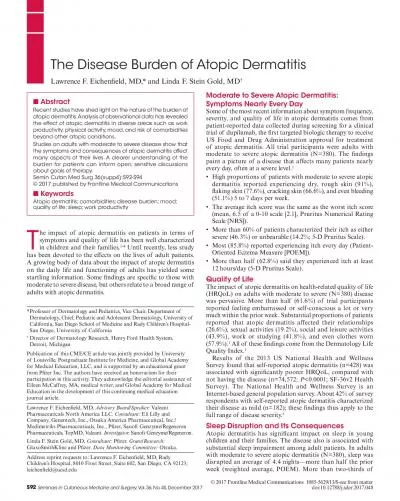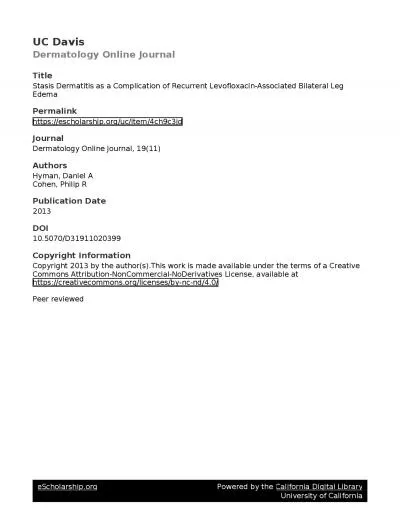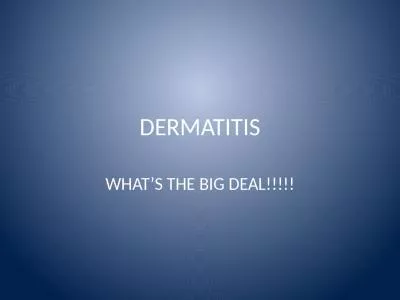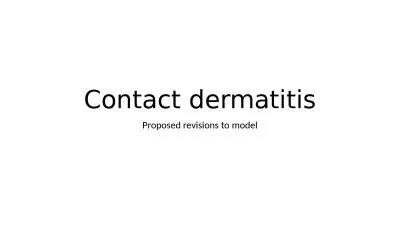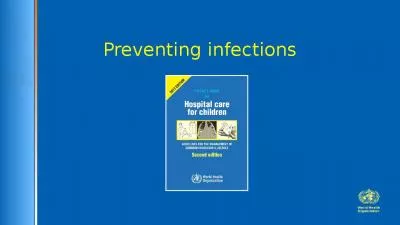PPT-VTCT level 2 award in preventing contact dermatitis -
Author : pamela | Published Date : 2023-05-23
UV20556 The knowledge you gain through completing this unit will help you understand and explain the causes signs and symptoms of contact dermatitis and the
Presentation Embed Code
Download Presentation
Download Presentation The PPT/PDF document "VTCT level 2 award in preventing contact..." is the property of its rightful owner. Permission is granted to download and print the materials on this website for personal, non-commercial use only, and to display it on your personal computer provided you do not modify the materials and that you retain all copyright notices contained in the materials. By downloading content from our website, you accept the terms of this agreement.
VTCT level 2 award in preventing contact dermatitis -: Transcript
Download Rules Of Document
"VTCT level 2 award in preventing contact dermatitis -"The content belongs to its owner. You may download and print it for personal use, without modification, and keep all copyright notices. By downloading, you agree to these terms.
Related Documents

